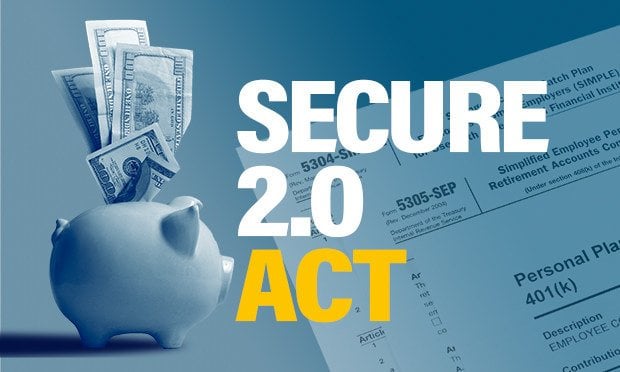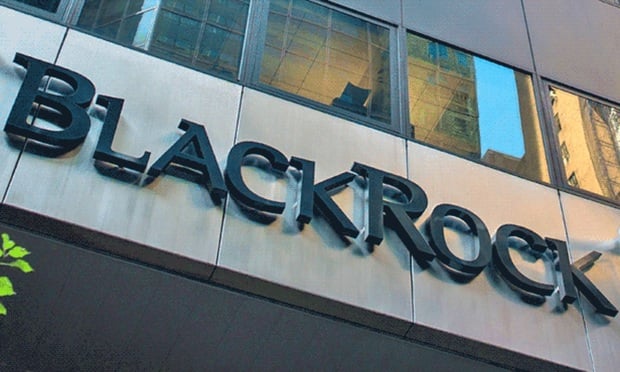
Americans' retirement confidence has dropped considerably as workers continue to feel the pressures of high prices, market volatility and rising interest rates. A new Nationwide Retirement Institute survey found about 1 in 5 consumers are worried about falling off track with their retirement goals.
Small businesses – which employ nearly half of all U.S. employees – face similar economic headwinds that can be exacerbated by a challenging labor market. One third of small business owners report struggling to find workers in the past six months and many expect further difficulty with attracting and retaining good employees in the next six.
Recommended For You
The recently passed SECURE 2.0 Act is a win-win for workers and small business owners, offering access to expanded retirement plan benefits for employees and helping to level the playing field for small businesses competing to retain top talent.
So why aren't more small and mid-sized business owners jumping for joy and taking advantage of these opportunities to better support and attract workers? Well, it turns out most of them don't actually know about them.
Enhanced startup and employer match tax credits
Our survey found two-thirds of small business owners are unaware of a major provision of SECURE 2.0 that increases the tax credit allowance for employers with 50 or fewer workers to 100% of employer retirement plan startup costs to be utilized in the year of credit. That's a significant increase of 50% over the previous limit.
It also provides a new, additional credit for employer contributions made to a qualified plan, designed to help reduce the retirement plan access gap. For small businesses without retirement benefits for their workers, starting up a plan has become a much easier financial decision as these enhanced credits can potentially cover the costs of operating a small plan for up to three years.
Student loan matching opportunities
The average student loan debt for recent college grads is nearly $30,000, so it's not hard to understand why many young workers focus on paying off educational debt early in their careers in lieu of contributing to their retirement plan. But they shouldn't have to make that choice. Even a small delay in setting aside money for the future can amount to significant lost earning potential when factoring in employer matches and compounding returns.
SECURE 2.0 takes a huge step forward in helping employers better support early career workers by enabling matching contributions to workers' retirement plans based on their qualifying student loan payments. This provision could serve as a big differentiator for attracting young candidates and every employer – small or large – should consider taking advantage of it. But 65% of small businesses and 38% of mid-sized businesses lack knowledge about the change and how to implement it.
The Enhanced Emergency and Retirement Savings Act
Nationwide's survey also found that when it comes to managing their expenses, about a third of Americans are most concerned about their lack of savings for emergencies. That's not surprising when you consider that one-third of Americans have more credit card debt than emergency savings according to research from BankRate. The fear of not being able to access needed funds in the event of unforeseen emergencies is also a top reason why many workers choose not to participate in their workplace retirement plans.
 Join our LinkedIn group, ALM's Small Business Adviser, a space where small business owners can gather to network, have discussions and keep up with the trends and issues affecting their industries.
Join our LinkedIn group, ALM's Small Business Adviser, a space where small business owners can gather to network, have discussions and keep up with the trends and issues affecting their industries. The Enhancing Emergency and Retirement Savings Act, which is included in SECURE 2.0 legislation and Nationwide strongly advocated for, provides a needed solution to those concerns by allowing workers to tap into retirement savings for emergency expenses without penalty. The bill permits employees to take one, penalty-free withdrawal of up to $1,000 per calendar year to cover emergency personal expenses. Repayment of those withdrawals can be made over a three-year period.
Six in 10 small business owners and about a third of mid-market owners report not knowing about this new option for their employees, even though it's a critical step toward greater peace of mind for the millions of Americans whose finances could be in jeopardy in the event of an unplanned emergency.
Improved long-time, part-time worker benefits
Participating in a retirement plan is crucial for fostering a secure and stable future after your working years, but prior to SECURE 2.0's passage, only about 40% of part-time employees had access to one. Now, workers with two years of consecutive part-time service can participate in employer-sponsored 401(k) plans, reduced from the previous requisite of three consecutive years.
With many businesses relying on part-time employees, this is yet another way SECURE 2.0 makes it easier for their workforce to save for the future. However, only 40% of small business owners and 26% of mid-market owners were aware of this new benefit for them.
Don't miss out on these easy opportunities to set workers up for success
SECURE 2.0 includes numerous beneficial provisions for employers and workers alike, but for many, the new legislation can seem difficult to navigate. If you're an employer and you're looking for information on where to start, we encourage you to have a conversation with your advisor or plan consultant about how to best implement these opportunities within your retirement benefits plan.
Related: SECURE 2.0: Small, medium businesses have 'limited understanding' of new law
If you're an advisor or consultant, now is a great time to engage your clients in these conversations. Not only can the enhancements offer small businesses an edge with hiring or retaining talent in a competitive market, you'll build trust and demonstrate more value for your clients by helping them understand powerful new opportunities they didn't know existed.
Eric Stevenson is President of Retirement Solutions at Nationwide.
© Touchpoint Markets, All Rights Reserved. Request academic re-use from www.copyright.com. All other uses, submit a request to [email protected]. For more inforrmation visit Asset & Logo Licensing.






